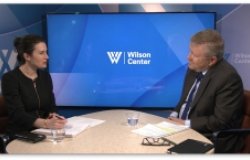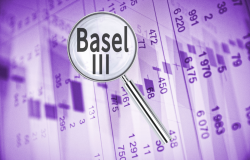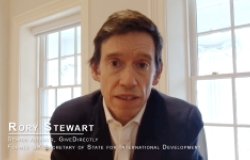Is This Time Different?
Thinking “this time is different” is a pitfall that wary investors and prudent policymakers are well-advised to avoid. And for good reason. As economists Carmen Reinhart and Ken Rogoff have argued, the history of sovereign debt is filled with examples of otherwise savvy investors falling into that trap only to realize that past debt defaults are indeed a good guide to future losses. In recognition of such risks, a well-established meme in investing newsletters and economic commentary explains why “this time usually isn’t different.”
At the same time, there seems to be an inexhaustible supply of dire warnings of economic and financial Armageddon. Perhaps no better example of this genre was the claim that the extraordinary monetary and fiscal responses to the global financial crisis, now more than a decade ago, would lead to massive inflation and the debasement of the U.S. dollar. Whether these dire predictions reflected faulty reasoning, political opportunism, or the work of financial charlatans can be debated.
But what is beyond dispute is the fact that such claims were thoroughly debunked. Not only was the dollar not debased by the Fed’s actions, it appreciated against other currencies as global investors sought refuge in the safe haven of dollar-denominated assets. Moreover, prices did not rise at rates reminiscent of the great German hyperinflation of the 1920s, as some had warned; in fact, the Fed spent much of the past decade trying – but failing – to get inflation up to its own 2 percent target.
Regrettably, the consequences of such spectacular forecasting failures were not limited to the financial losses of those who invested based on these predictions. A decade ago, auguries of fiscal fiascos and monetary mayhem were mobilized to justify political opposition to fiscal stimulus. The ensuing application of sequestration to government expenditures introduced additional resistance to an economy already straining against financial headwinds. The Great Recession was the unfortunate result.
Recession Narratives in Politics
As the Biden administration moves forward with an ambitious fiscal package to address the economic dislocation caused by the COVID-19 pandemic, it should therefore brace itself for possible claims that “this time is different;” that this time around higher deficits and truly extraordinary monetary responses really will lead to economic and financial mayhem. The danger is that political opportunists will use such warnings to their political advantage. Hopefully, these individuals will heed President Biden’s call for national unity, embrace bipartisanship, and eschew strategic divisiveness. But hope is not a plan. And with the 2024 mid-term elections now less than two years away, political expediency could lead some in Congress to issue dire warnings of a looming fiscal reckoning, seeking to limit effective responses to economic dislocation.
Such warnings, should they come, would likely be clothed in the language of prudence, fiscal rectitude, and concern for future generations. While this assessment may seem excessively jaded, if not positively cynical, it is what history suggests will be. After all, just three years ago, many in Congress were willing to sacrifice fiscal probity on the altar of tax cuts predominantly weighted to the wealthy. If “prudence” was their shibboleth then, when the economy was in full expansion, they should have been arguing for modest tax increases to create the fiscal space that would be needed to deal with the adverse economic shocks that inevitably come. They did not. And the promised burst in investment that the tax cuts would unleash, on which they justified their votes without firm foundations in either theory or evidence, did not materialize.
But could warnings of fiscal cliffs and inflationary impulses be warranted? Could this time be different?
Shock Absorbers and Other Sources of Stability
Several factors suggest the answer to these questions is “no.” The global economy has entered a period of sustained low “real” interest rates, defined as observed market (nominal) rates minus the rate of expected inflation. In fact, a growing share of global bond markets yields negative nominal rates.
This anomaly is largely explained by the fact that the world is awash in savings, reflecting aging populations and the accumulation of savings to support retirement. It is unclear whether the “secular stagnation” stemming from the resulting shortfall in demand, as investment fails to keep up with savings, is a long-term phenomenon or merely a temporary pause. In any event, with interest rates at historically low levels, the cost of servicing debt has fallen even as the stock of debt has increased. That fact is unlikely to change in the near term.
Similarly, extraordinary monetary responses of central banks around the globe, led by the Fed, quelled a panic-induced “dash for cash” that was triggered in March 2020 when markets recognized the devastating consequences of the pandemic. That response was largely concentrated in investment funds. But had central banks not provided the liquidity needed to prevent a truly frightening fire sale of assets, that panic might have had spilled over to other sectors of the financial system.
In contrast to the Great Recession of 2008-2009, the banking system in the United States and other advanced economies has been a source of stability. Banks acted as shock absorbers, not the source and major transmitters of shocks to the economy. But if the Fed had been proscribed from rapidly expanding its balance sheet, as some in Congress had proposed in the wake of the last crisis, it is quite likely that the outlook today would be far worse. In short, it would have been a policy error on the scale of the Fed’s failure to provide banks liquidity in days following the 1929 stock market crash.
Rising National Debt and Other Sources of Instability
This is not to say that there are no risks associated with extraordinary policy responses already in train or proposed. For example, while the Fed’s many lending facilities have flooded financial markets with liquidity that has boosted asset prices and calmed markets, by encouraging risk-taking in the search for yield, this response could undermine financial stability going forward. Relying on monetary policy alone to restore full employment could entail increased threats to financial stability.
Similarly, there are risks associated with unbounded fiscal deficits, notwithstanding the fact that the prospect of a fiscal crisis is low – at least for the immediate future. While debt-servicing costs have declined even as debt loads have increased, an increase in interest rates that reflect a jump in expected inflation would lead to higher debt-servicing costs, possibility eroding financial market confidence and further raising rates. At the same time, as outstanding debt increases, market willingness to hold additional debt may decline, particularly if an increasing share of the debt is held abroad. In that case, foreign investors may fear a weakening resolve on the part of the authorities to anchor prices and begin to price-in possible dollar depreciation from inflation; if inflation is expected to increase appreciably, risk premiums would rise which would boost nominal interest rates even higher.
It seems clear, therefore, that a “this time is different” scenario hinges on the outlook for inflation. How individuals view the stance of policies going forward and whether they are judged to be temporary or permanent may hold the key.
Inflation Signals
In the post-financial crisis period, inflation was undoubtedly held in check by a large persistent output gap – the difference between the capacity of the economy at full employment and the actual level of output. Obviously, there were several factors at play here, including changes in the transmission mechanism or the channels through which monetary policy affects output and prices. And, clearly, a large part of that output gap is explained by politically motivated fiscal sequestration. But inflation expectations were likely suppressed by the perception that both monetary and fiscal policy responses were temporary – that the expansionary responses today would be reversed by tightening tomorrow.
Such expectations were obvious with respect to fiscal policy because of sequestration. The same could be said, however, about monetary policy, especially if markets viewed inflation-targeting central bankers as “opportunistic dis-inflationists,” who were prepared to lock-in lower inflation generated by the crisis. If future monetary policy was expected to reverse current responses, inflation expectations would be less likely to adjust. In fact, as noted above, the actual experience post-2008 was that inflation consistently undershot the Fed’s target.
As Paul Krugman facetiously argued at the time, perhaps central bankers did not “commit to being irresponsible.” In other words, that their desire to be viewed as responsible and prudent led them to be too timid in their responses, which ultimately proved insufficient to overcome the headwinds in the economy and the effects of sequestration.
Fast forward to today. We have seen truly extraordinary monetary and fiscal policy responses in response to the pandemic, with more proposed. And we have also seen a convergence of forces that could see these responses sustained over a longer time horizon. For example, with a much higher debt-to-GDP ratio, monetary policy may need to be more accommodative to facilitate the rollover of outstanding debt and to ensure markets can absorb new issues. Moreover, there is now a growing consensus based on both efficacy and risk management that fiscal policy must be used more aggressively to restore full employment.
These factors could animate a shift in the way that individuals and markets view policy going forward. Added to a quick rebound in activity and wave of optimism once vaccines are widely distributed and the risk of COVID-19 declines (a “roaring 20s” effect), and a supply response that may possibly be muted by the scarring effects from the pandemic, these effects could lead to a discrete upward shift in inflation. Such effects underpin the warning about the Biden American Rescue Plan coming from thoughtful observers, such as Larry Summers and others, who contend the plan is too big, with too much fiscal stimulus given the size of the output gap.
So, “Is this time different?”
The answer could be “perhaps,” but the wary investor or prudent policymaker should not count on it. And such a scenario, if it materializes, would not entail the monetary debauchery and inevitable fiscal cliffs that politically motivated doomsayers can be counted on to predict. Rather than an unexpected increase in inflation on the order of the 1970s, much less hyperinflation, a modest, temporary increase above the Fed’s 2 percent target is more likely.
Such an increase, even if sustained for only a brief period, would nevertheless be significant. Markets are currently pricing-in an increase in inflation, but only a return to roughly the Fed’s 2 percent target. (This likely reflects the Fed’s credibility and commitment to price stability.) Higher inflation would thus represent a sizable shock.
But the costs of potential adverse consequences from this shock must be weighed against benefits. If the maturity of existing debt is extended, locking in interest rates at their current extraordinarily low rates, higher debt burdens would be steadily reduced over time as the economy grows. Together with higher taxes on the wealthiest individuals, many of whom pay less tax than middle-income workers, such measures would bring debt loads down and promote sound public finances.
From the perspective of monetary policy, meanwhile, higher inflation that raises interest rates from their current floors would not necessarily be unwelcome as it would reduce the risks associated with conducting monetary policy at the zero-lower bound. A period of higher inflation would also be consistent with the Fed’s new Flexible Average Inflation Targeting policy framework, which reinforces the notion that the 2% target is an average, not an upper bound. It follows that if inflation is to average 2% following a period of below-target, it must rise above that level for some period. But that fact does not imply that the Fed is indifferent to inflation rising too high, too fast. Evidence of accelerating inflation, which could become embedded in expectations of steadily rising prices, would undoubtedly elicit monetary tightening. And while such a scenario would present the Fed with the difficult challenge of bringing inflation down without causing a recession, it is a challenge that the Fed would welcome.
Most important, however, the aggressive use of monetary and fiscal policies to restore full employment would begin to address the corrosive malaise that is eroding the bonds between Americans and which, if not treated, will impair long-term growth and prosperity. In this respect, reflecting on the sad record of the past decade, we can only hope that this time truly is different.
Documents & Downloads
About the Author


Canada Institute
The mission of the Wilson Center's Canada Institute is to raise the level of knowledge of Canada in the United States, particularly within the Washington, DC policy community. Research projects, initiatives, podcasts, and publications cover contemporary Canada, US-Canadian relations, North American political economy, and Canada's global role as it intersects with US national interests. Read more













